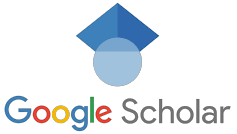THE EFFECTIVENESS IN USING REMAPS IN IMPROVING WIFI COVERAGE
Abstract
Abstract
Remote Mobile Access Point technology or REMAPS is an innovation built to facilitates and
benefits the user in expanding the wireless technology in anywhere possible. This study is to
survey the effects from the use of this innovative technology in increasing the effectiveness of
REMAPS in improving Wi-Fi coverage at community college generally. REMAPS was
developed by using natural energy source which is solar energy or solar through the use of solar
panels known as technology photovoltan in helping users to reach out internet access anywhere
possible without having to rely on electricity from the grid. The innovative technology was
design using lightweight material and able to withstand weathers in Malaysia. As Malaysia are
heading towards IR4.0 technology, REMAPS are also equipped with IOT technology where users
can control the device using hand phone application. A total of 210 respondents p a r t i c i p a t e
d from Jasin Community College and Segamat Community College to see the effectiveness in
using REMAPS in their college. Jasin Community College and Segamat Community College was selected to see the differences in effectiveness between campus and shop lot type of college. The research design is a quantitative survey using a questionnaire as an instrument. Data were analyzed involving mean, standard deviation and T. Test. Results of the study shows there is a high tendency in terms of implementation, awareness and control application in using REMAPS
Technology.
Downloads
Published
Issue
Section
License
The content of The International Journal of Technical Vocational and Engineering Technology (IJTVET) is licensed under a Creative Commons Attribution 4.0 International license (CC BY NC ND 4.0). Authors transfer the ownership of their articles' copyright and publication right to the International Journal of Technical Vocational and Engineering Technology (IJTVET). Permission is granted to the Malaysian Technical Doctorate Association (MTDA) to publish the submitted articles. The authors also permit any third party to freely share the article as long as the original authors and citation information are properly cited.
















